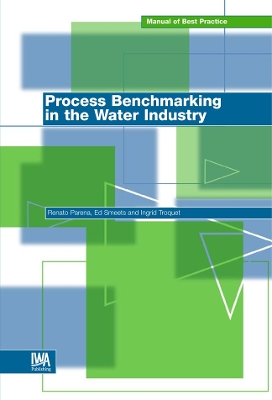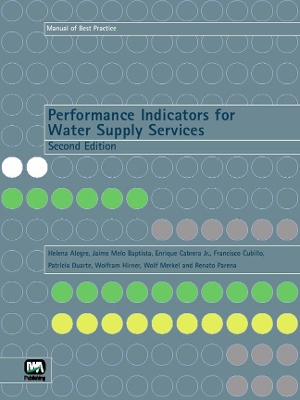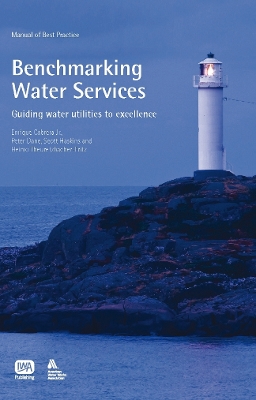Manual of Best Practice
3 total works
Process Benchmarking in the Water Industry
by Renato Parena, E. Smeets, and I. Troquet
Published 1 March 2002
Free market mechanisms increasingly influence former monopoly sectors such as water and wastewater services with requirements for more transparency and efficiency. Small and large-scale consumers alike demand greater insight into how drinking water tariffs are structured and into the level of service. Public and private shareholders require guarantees on water supply at a reasonable price, with the requisite quality (both of service and product) and reliability together with careful eco-management. Developing sound policies requires information on key industry issues such as water resources, public health, water services, the environment and the cost of providing the level of the service demanded by customers and regulators. Similarly, informed decision-making on issues of ownership, industry structure, competition policy and effective regulation requires accurate analysis of performance across the industry throughout the world. In many sectors of industry Performance Indicators and Benchmarking exercises are widely used as suitable management tools for gaining and maintaining continuous improvement and competitive advantage. Addressing the need to promote best practice principles as part of the advocacy for the advancement of water and sanitation services is currently one of the major governance issues that IWA is challenged to tackle. The objective is to develop generally accepted procedures and methodologies able to provide decision makers with an overall perception of the utility performance as a sound basis for making strategic choices. This requires the definition of a reference framework for Performance Indicators and Benchmarking methodologies, as well as adequate models of aggregation that fit the basic needs of the key types of user. The Task Force on Performance Indicators (operating within the IWA Operation and Management Specialist Group) and the Task Force on Benchmarking (operating within the IWA Statistics and Economics Specialist Group) were set up with the remit to develop the definition of such a common language. The Task Force on Benchmarking carried out a survey among the countries represented inside the Statistics and Economics Specialist Group with the aim of designing a framework of the various national approaches to Benchmarking in terms of: The type, degree evolution and main adopted concepts of Benchmarking Development of the above concepts in focusing Benchmark objectives The survey indicated that, in the main, initiatives of Process Benchmarking are voluntary and non-systematic. It is evident that many water utilities are on what the European Foundation for Quality Management calls the "start-up" level in terms of Business excellence (or continuous improvement) and are keen to find best practices to compare with. The Task Force on Benchmarking moved to the second step, borrowing the European Commission's DG III recommendation that identify benchmarking as an important tool to improve competitiveness of small and medium sized enterprises in Europe according to the methodologies developed and applied in large corporations. With the objective of developing a generally accepted concept and a methodology with wide applicability, deeper analyses were then made of Process Benchmarking procedures adopted in the Nordic countries and in The Netherlands. As a result this Manual aims to present well-devised guidelines for establishing a management tool based on the use of Process Benchmarking methodologies that will allow future systematic and rigorous performance comparisons to be made within the water industry. Contents Main benchmarking experiences in a water context How far we are on benchmarking Benchmarking methodologies in the Netherlands and the Nordic countries One coherent philosophy for two different approaches Process Benchmarking approach Key numbers and definitions References Relations between process benchmarking and performance indicators Introduction letter and questionnaires
Performance Indicators for Water Supply Services
by Helena Alegre, Jaime M. Baptista, Enrique Cabrera, Francisco Cubillo, Patricia Duarte, Wolfram Hirner, Wolf Merkel, and Renato Parena
Published 30 June 2000
The IWA Performance Indicator System for water services is now recognized as a worldwide reference. Since it first appearance in 2000, the system has been widely quoted, adapted and used in a large number of projects both for internal performance assessment and metric benchmarking. Water professionals have benefited from a coherent and flexible system, with precise and detailed definitions that in many cases have become a standard. The system has proven to be adaptable and it has been used in very different contexts for diverse purposes. The Performance Indicators System can be used in any organization regardless of its size, nature (public, private, etc.) or degree of complexity and development. The second edition of Performance Indicators for Water Supply Services represents a further improvement of the original manual. It contains a reviewed and consolidated version of the indicators, resulting from the real needs of water companies worldwide that were expressed during the extensive field testing of the original system. The indicators now properly cover bulk distribution and the needs of developing countries, and all definitions have been thoroughly revised. The confidence grading scheme has been simplified and the procedure to assess the results- uncertainty has been significantly enhanced. In addition to the updated contents of the original edition, a large part of the manual is now devoted to the practical application of the system. Complete with simplified step-by-step implementation procedures and case studies, the manual provides guidelines on how to adapt the IWA concepts and indicators to specific contexts and objectives. The manual includes a new version of the software Sigma Lite incorporating all the new developments and an improved graphical user interface. This new edition of Performance Indicators for Water Supply Services will be an invaluable reference source for all those concerned with managing the performance of the water supply industry, including those in the water utilities as well as regulators, policy-makers and financial agencies.
Benchmarking Water Services
by Enrique Cabrera, Peter Dane, Scott Haskins, and Heimo Theuretzbacher-Fritz
Published 1 March 2011
Benchmarking has become a key tool in the water industry to promote and achieve performance targets for utilities. The use of this tool for performance improvement through systematic search and adaptation of leading practices, has expanded globally during the past decade. Many ongoing projects worldwide aim to address different needs and objectives, in varying contexts, with outstanding results and impact.
Benchmarking Water Services provides valuable information to everyone interested in benchmarking in the water industry. The text is aimed at utilities considering joining a benchmarking project, experienced practitioners in charge of organizing a benchmarking exercise, consultants, regulators and researchers. The document is presented with a clear practice oriented approach and can be used as a how-to-benchmark guide presented from different perspectives (participants, organizers, supervising bodies). Readers will gain practical insight on real life benchmarking practices and will benefit from the experiences gained in some of the leading benchmarking projects of the water industry (including the IWA-WSAA benchmarking efforts, the European Benchmarking Co-operation and the several benchmarking projects carried out in Austria and Central Europe). The manual also presents the new IWA Benchmarking Framework, which aims to harmonize the terms used to describe benchmarking and performance indicators practices in the water industry, guaranteeing a more fluent and efficient communication.
This Manual of Best Practice is edited by the IWA Specialist Group on Benchmarking and Performance Assessment, and co-published by AWWA and IWA Publishing.
Praise for Benchmarking Water Services: "The continual trend of conceptual to specifics throughout the book provides for an educational experience each time the book is either casually perused or carefully studied." "The authors (Cabrera, Haskins and Fritiz) diligently pursue the focus of improvement." "Benchmarking Water Services is an in depth and practical 'must have' guide for any utility currently engaged in or planning to develop a benchmarking process" - Gregory M. Baird (2012) Benchmarking: An International Journal 19:2.
More information about the book can be found on the Water Wiki in an article written by the author: http://www.iwawaterwiki.org/xwiki/bin/view/Articles/TheNewIWABenchmarkingFramework
A Spanish language version of this book is available as a free eBook: http://www.iwawaterwiki.org/xwiki/bin/view/Articles/eBookTitlesfromIWAPublishingFreetoDownload-Volume2#HBenchmarkingParaServiciosdeAgua
Benchmarking Water Services provides valuable information to everyone interested in benchmarking in the water industry. The text is aimed at utilities considering joining a benchmarking project, experienced practitioners in charge of organizing a benchmarking exercise, consultants, regulators and researchers. The document is presented with a clear practice oriented approach and can be used as a how-to-benchmark guide presented from different perspectives (participants, organizers, supervising bodies). Readers will gain practical insight on real life benchmarking practices and will benefit from the experiences gained in some of the leading benchmarking projects of the water industry (including the IWA-WSAA benchmarking efforts, the European Benchmarking Co-operation and the several benchmarking projects carried out in Austria and Central Europe). The manual also presents the new IWA Benchmarking Framework, which aims to harmonize the terms used to describe benchmarking and performance indicators practices in the water industry, guaranteeing a more fluent and efficient communication.
This Manual of Best Practice is edited by the IWA Specialist Group on Benchmarking and Performance Assessment, and co-published by AWWA and IWA Publishing.
Praise for Benchmarking Water Services: "The continual trend of conceptual to specifics throughout the book provides for an educational experience each time the book is either casually perused or carefully studied." "The authors (Cabrera, Haskins and Fritiz) diligently pursue the focus of improvement." "Benchmarking Water Services is an in depth and practical 'must have' guide for any utility currently engaged in or planning to develop a benchmarking process" - Gregory M. Baird (2012) Benchmarking: An International Journal 19:2.
More information about the book can be found on the Water Wiki in an article written by the author: http://www.iwawaterwiki.org/xwiki/bin/view/Articles/TheNewIWABenchmarkingFramework
A Spanish language version of this book is available as a free eBook: http://www.iwawaterwiki.org/xwiki/bin/view/Articles/eBookTitlesfromIWAPublishingFreetoDownload-Volume2#HBenchmarkingParaServiciosdeAgua


